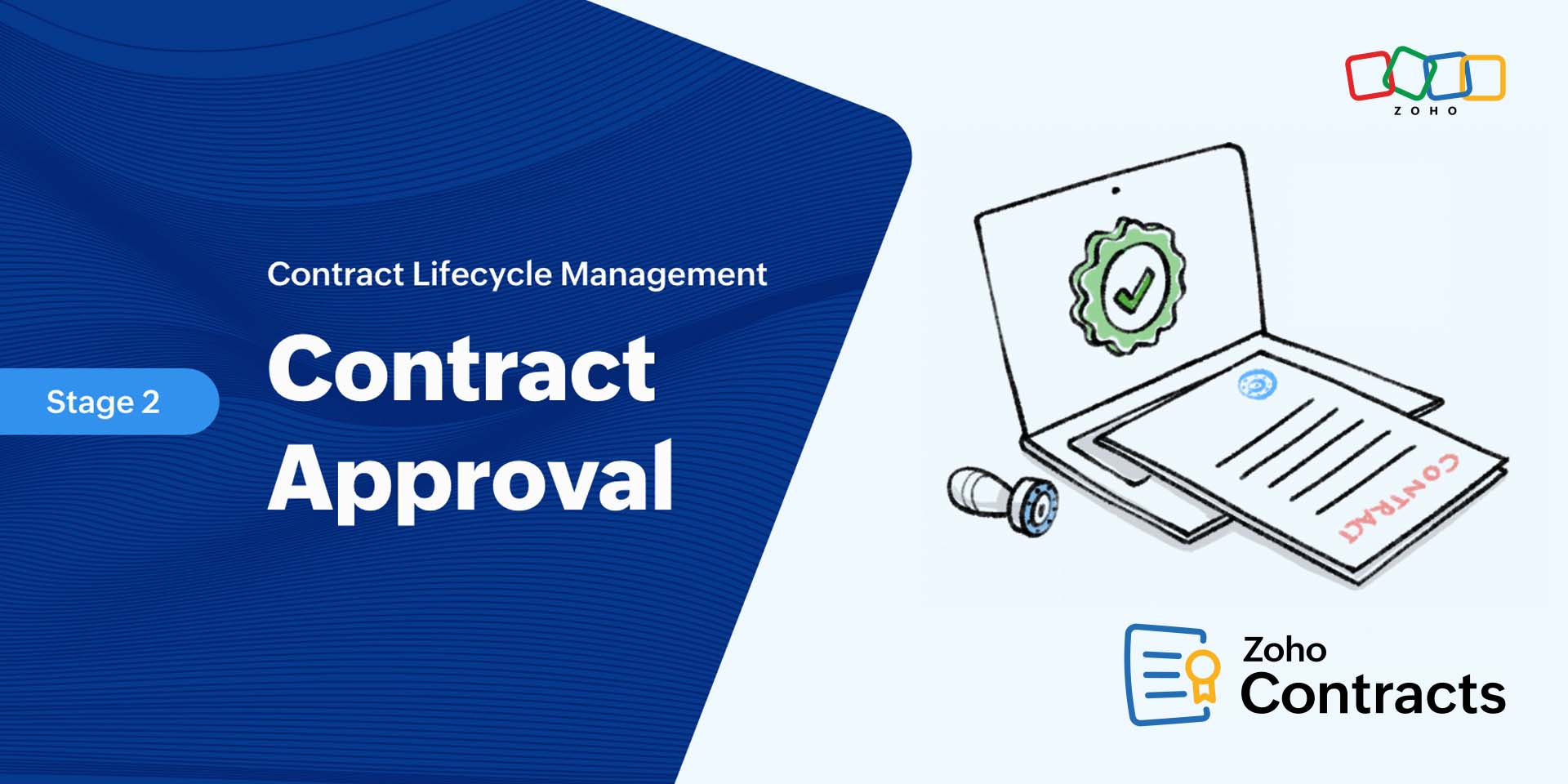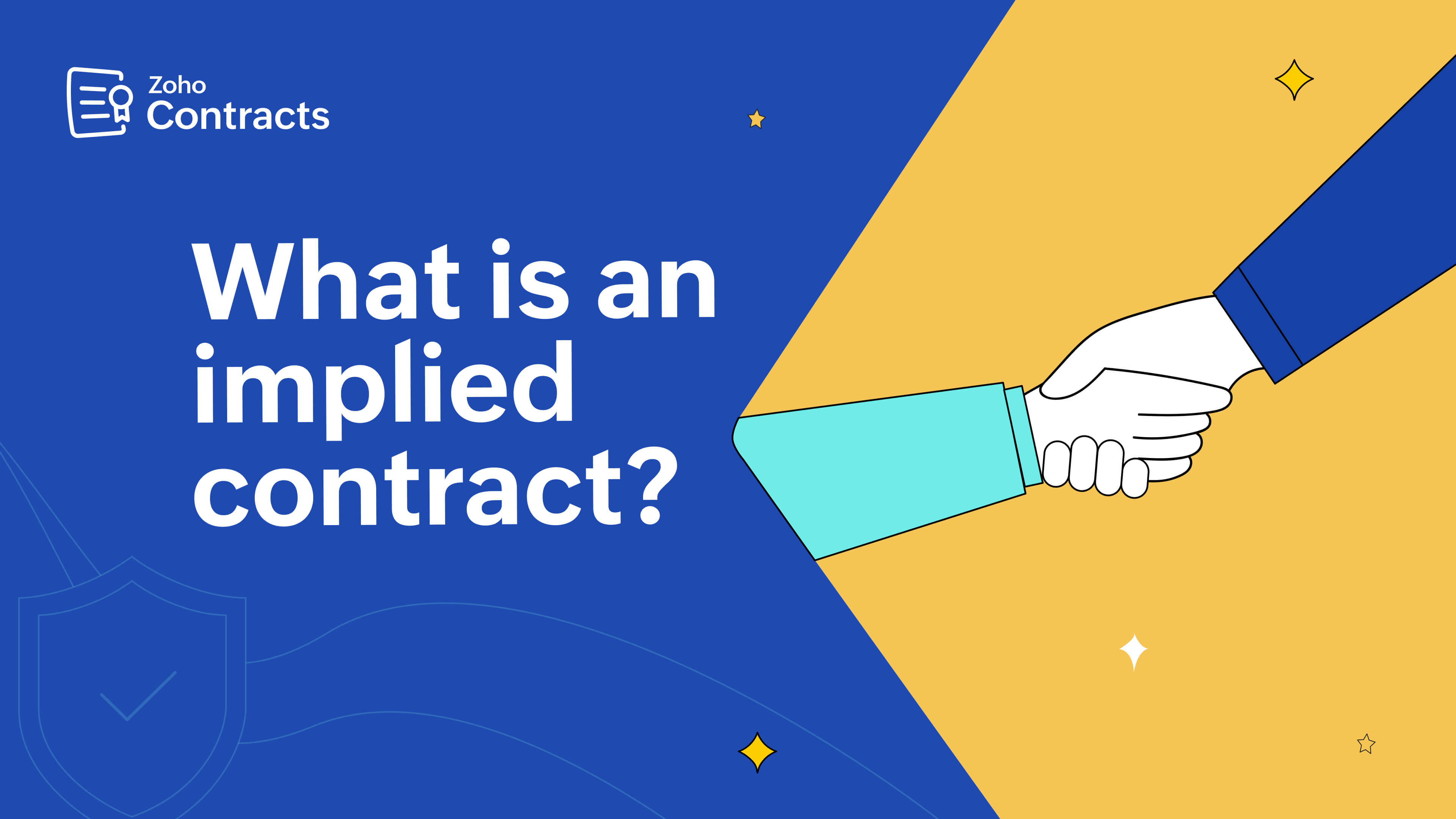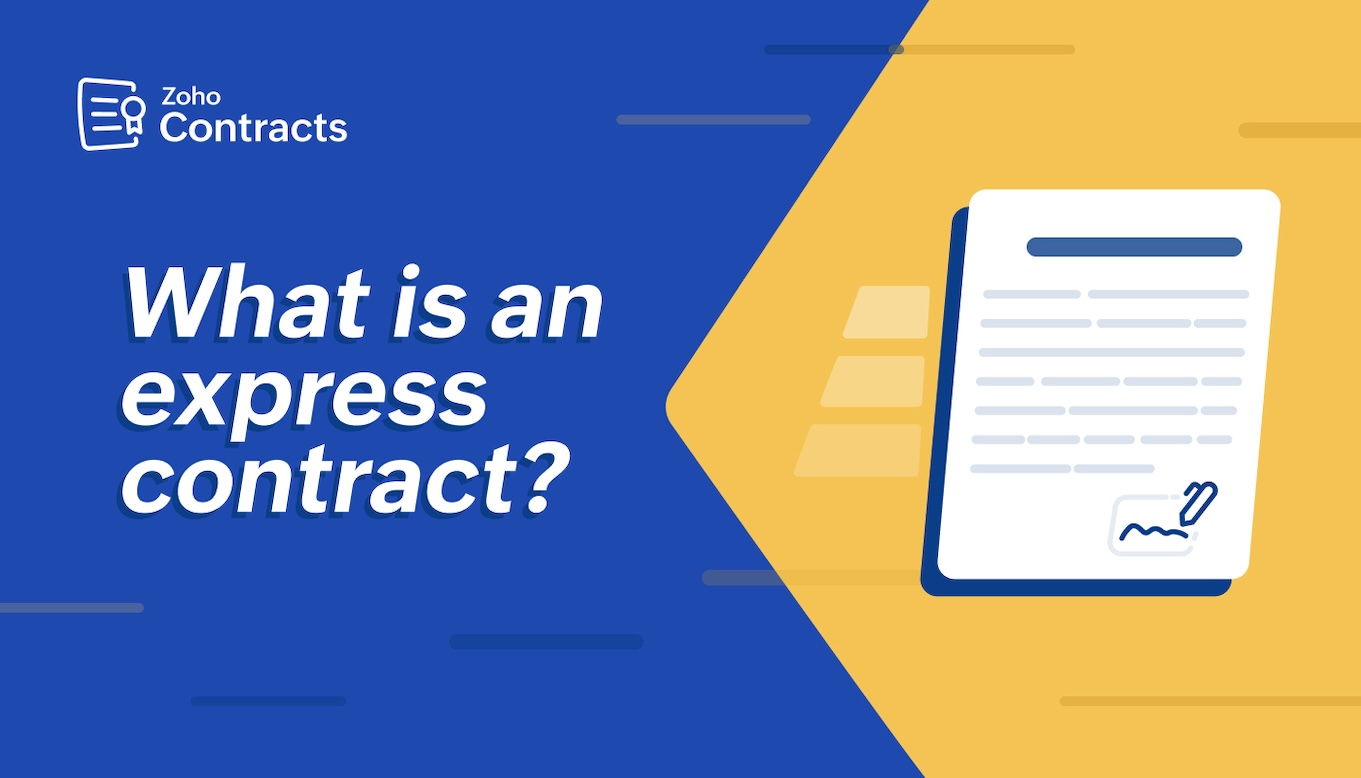- HOME
- Contract Management
- Contract Approval: Stage 2 of Contract Lifecycle Management
Contract Approval: Stage 2 of Contract Lifecycle Management
- Last Updated : December 6, 2023
- 909 Views
- 4 Min Read

Welcome to our blog series on the stages of Contract Lifecycle Management (CLM).
Contract lifecycle management (CLM) is a systematic approach to managing contracts from the initial authoring phase to the contract's expiration or renewal. CLM is a comprehensive process that covers the entire contract lifecycle which has seven stages.
In this blog, let's look at the second stage in the contract lifecycle - contract approval. Contract authoring is the first stage in the CLM.
What is the contract approval process?
In the contract lifecycle, contract approval follows contract authoring. This stage ensures that all of the stakeholders are aware of the potential risks and opportunities related to the contract at an early stage, therefore improving compliance and mitigating risks.
What does a manual contract approval process look like?
A typical steps of an approval process are:
The contract owner mails the contract draft to the related stakeholders.
Stakeholders review the contract terms and conditions. Usually, the legal counsel, C-level leadership, and finance team get involved in the approval process.
The stakeholders approve or reject the contract by adding necessary comments or making other necessary changes to the contract document. In some organizations, contract negotiation precedes contract approval.
Once approved, the contract moves to the next stage in the lifecycle. If it’s rejected, the contract owner returns to the drawing board to modify the agreement.
What is an approval workflow?
An approval workflow defines the approvers of a contract and the approval process it must go through. Contract admins usually create multiple approval workflows based on the contract types that they need to be associated with. Organizations define official approval processes for critical contract types with potential for risks.
There are two types of approval workflows:
Sequential
Parallel
Sequential approval workflow
In a sequential workflow, there are multiple levels of approvals. The contract administrator defines the approvers for each level of approval. The contract moves to the next level only after it’s approved at the current level.
Parallel approval workflow
The parallel workflow is a flat model, and there’s only one level of approval. The approval request is sent to all of the approvers simultaneously. A contract moves to the approved state after all of the approvers approve the contract.
Challenges in the manual approval process
Slow process: With the lack of automation, contract owners must send emails to multiple people for approval and track them and the associated contract changes they suggested, if any. This entire process is time-consuming and affects the contract turnaround time.
Room for error: The chances for errors in the contract are high because of too many reviews and suggestions sent by multiple stakeholders at different times. Similarly, there are higher chances of sending emails to the wrong stakeholders or missing out on emailing a particular stakeholder altogether.
Lack of version control: In all of the back-and-forth between the various stakeholders, it can become difficult to track all of the approvals in the form of emails during audits. The wrong contract version can also be mailed to a stakeholder unknowingly because of the lack of version control.
Approval delays: Approvers or stakeholders have many emails piled up in their inboxes. Challenges such as missed emails or toggling between multiple applications can result in approval delays. Because it’s a manual process, no automatic reminder emails or notifications are triggered, further adding to the delay.
Chances of skipping the process: Due to a lack of rigid rules and framework, the possibility exists of sending contracts to the next stage without approval.
How CLM software streamlines the contract approval process
Automated approval workflows: CLM software allows admins to associate workflows with contract types. The moment the contract owner sends the contract for approval, the software will automatically notify the related stakeholders based on the associated approval workflow. This ensures a streamlined approval process.
Documented approvals: A contract moves to the approved state only after it’s been approved by all of the approving stakeholders in the respective workflow. The approvals are also digitally documented with time stamps, making official record keeping and audits effortless.
Quick and effective communication: Approvers can make changes and leave their suggestions using in-line comments. They can also set granular visibility to these comments. CLM software, with its stage-level activity tracking, informs contract managers about stakeholder activity, such as whether an approver has opened the document. This eliminates the need for back-and-forth emailing or chat discussions for status checking.
No process skipping: CLM software allows admins to configure approval workflows for contract types. Once configured, the contract cannot move to the next stage in its lifecycle without the approver-stakeholders approving the contract document. This ensures better compliance and mitigates risks.
Wrapping up
In the next blog post in this series, we talk about contract negotiation and how CLM software can enable a seamless negotiation process.
If you want to experience the features of Zoho Contracts, such as approval workflows, contextual commenting, and version control, sign up for a free trial or request a demo today.
 Akshaya Ganesh
Akshaya GaneshA journalist turned marketer who loves to travel.


